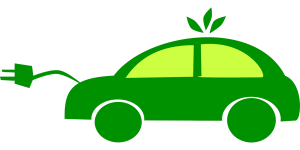In “How Can I Reduce Emissions From My Car?”, we explore practical and effective ways to minimize our vehicle’s environmental impact. From adopting better driving habits to ensuring timely maintenance, this guide offers a comprehensive look at steps we can take to reduce emissions. Understanding the significance of our carbon footprint and the simple changes we can make not only benefits the planet but also often leads to savings in fuel costs.
Let’s dive into how we can drive greener and make a positive difference for our world. By implementing these strategies, we’ll contribute to cleaner air and a healthier future. How Can I Reduce Emissions From My Car?
Have you ever found yourself asking, “How can I reduce emissions from my car?” We’ve been there too. As we become more aware of the impact that vehicle emissions have on our environment, the desire to make a positive change grows. Reducing your car’s emissions isn’t just beneficial for the planet but can also save money and improve your vehicle’s performance. Let’s dive into some practical steps and useful tips that can help us to achieve a cleaner, more efficient driving experience.

Understanding Car Emissions
What Are Car Emissions?
When we talk about car emissions, we’re referring to the gases and particles released into the air from our vehicles’ exhaust systems. These emissions include pollutants like carbon monoxide (CO), nitrogen oxides (NOx), hydrocarbons (HC), and particulate matter (PM). Understanding what car emissions are and how they affect us is crucial in taking steps to mitigate their impact.
Why Should We Care About Reducing Emissions?
Reducing car emissions can significantly benefit both the environment and our personal lives. Lower emissions mean cleaner air, which reduces respiratory issues and other health problems. Additionally, incorporating emission-reducing practices often leads to better fuel efficiency, saving us time and money on fuel.
Here’s a quick look at the primary emissions and their impacts:
| Emission Type | Impact on Environment | Impact on Health |
|---|---|---|
| Carbon Monoxide (CO) | Contributes to air pollution | Reduces oxygen delivery in the body |
| Nitrogen Oxides (NOx) | Leads to acid rain and smog | Irritates respiratory system |
| Hydrocarbons (HC) | Contributes to ground-level ozone | Causes eye, lung, and throat irritation |
| Particulate Matter (PM) | Contaminates air and water | Leads to respiratory and cardiovascular diseases |
Maintaining Your Vehicle
Regular Maintenance
Keeping our vehicle well-maintained is one of the most effective ways to reduce emissions. Regular maintenance helps ensure that the car runs efficiently and minimizes harmful exhaust gases. Key elements include:
- Oil Changes: Fresh oil reduces engine friction, leading to better performance and lower emissions.
- Air Filter Replacement: A clean air filter improves airflow to the engine, enhancing fuel efficiency.
- Spark Plug Replacement: New spark plugs ensure proper combustion, reducing unburned fuel emissions.
Tire Maintenance
Properly inflated tires not only make our rides smoother but also improve fuel efficiency. Under-inflated tires can increase rolling resistance, forcing the engine to work harder and burn more fuel. Regularly check tire pressure and rotate tires according to the manufacturer’s recommendations.
Exhaust System Check
A functioning exhaust system, including the catalytic converter, is critical in controlling emissions. Regularly inspect for leaks and ensure the catalytic converter is working efficiently. If we notice any unusual sounds or a drop in performance, it’s wise to have a professional take a look.
Driving Habits
Avoid Idling
Did you know that idling for just a few minutes can waste more fuel than restarting the engine? By avoiding prolonged idling, we can save fuel and reduce unnecessary emissions. When we’re parked, waiting for someone, or stuck in traffic, turning off the engine is a simple yet effective way to cut down on emissions.
Smooth Acceleration and Deceleration
Rapid acceleration and sudden braking not only wear out the brake pads but also increase fuel consumption. Driving smoothly by gradually accelerating and decelerating can lead to significant reductions in emissions and improve fuel efficiency.
Use Cruise Control
When driving on highways, utilizing cruise control can help maintain a steady speed, reducing fuel consumption and emissions. Consistent speeds prevent the engine from overworking, ultimately improving overall efficiency.
Reduce Weight and Drag
The heavier the car, the harder the engine has to work, leading to increased emissions. We should remove unnecessary items from the car and, if possible, avoid using roof racks or carriers, which create additional drag and reduce aerodynamics.
Embracing Technology
Hybrid and Electric Vehicles
Hybrid and electric vehicles are designed to reduce emissions significantly. While hybrids use a combination of gasoline and electricity, electric vehicles (EVs) run solely on electricity, producing zero tailpipe emissions. Investing in such technology can make a substantial difference.
Start-Stop Systems
Many modern vehicles come equipped with start-stop systems that automatically turn off the engine when we come to a stop and start it again when we release the brake pedal. This feature helps cut down on idling time, saving fuel and reducing emissions.

Alternative Fuels
Biofuels
Biofuels, such as ethanol and biodiesel, are renewable energy sources derived from plants and other organic materials. Using biofuels can help us reduce our dependency on fossil fuels and cut down on carbon emissions. Flex-fuel vehicles, which can run on a combination of gasoline and ethanol, are becoming increasingly available.
Compressed Natural Gas (CNG)
Compressed Natural Gas is a cleaner alternative to gasoline or diesel. Vehicles powered by CNG emit fewer pollutants and greenhouse gases. Converting our existing vehicle to CNG or choosing a new CNG-powered vehicle can be a step in the right direction.
Carpooling and Ride-Sharing
Benefits of Carpooling
Carpooling not only reduces the number of vehicles on the road but also cuts down on overall emissions. By sharing rides, we can contribute to less traffic congestion, decreased fuel consumption, and fewer emissions. It’s also an excellent way to save money on travel costs.
Ride-Sharing Platforms
Ride-sharing platforms like Uber and Lyft offer convenient ways to share rides. They have seen increased popularity due to their ease of use and potential to reduce emissions. More people sharing a ride means fewer cars on the road and a smaller carbon footprint.

Planning Trips Wisely
Combine Trips
Instead of making multiple short trips, we can plan our errands to combine them into a single outing. Cold engines produce higher emissions, so reducing the number of cold starts can significantly decrease overall emissions.
Plan Routes
Using GPS and mapping apps, we can find the most efficient routes to our destinations. These tools can help us avoid traffic jams and choose routes that save time and fuel. Some apps even offer eco-routing options designed to minimize fuel consumption.
Alternative Transportation
Whenever possible, consider alternative modes of transportation. Walking, biking, or using public transport can dramatically reduce our personal carbon footprint. Additionally, these alternatives often come with the added benefits of promoting physical health and reducing traffic congestion.
Adopting Eco-Driving Techniques
Moderate Speed
Driving at excessive speeds often leads to increased fuel consumption and higher emissions. By maintaining a moderate and consistent speed, especially on highways, we can enhance fuel efficiency. Most vehicles achieve optimal fuel economy at speeds between 45 and 65 mph.
Use of Air Conditioning
While air conditioning provides comfort during hot days, it can also strain the engine, leading to higher fuel consumption. We can reduce emissions by using air conditioning sparingly and opting for open windows during cooler conditions. Parking in shaded areas can also prevent the vehicle’s interior from heating up excessively, reducing the need for air conditioning.

Environmental Benefits of Reduced Emissions
Air Quality Improvement
One of the significant benefits of reducing car emissions is improved air quality. Cleaner air can reduce the incidence of respiratory issues and other health problems caused by pollution. This leads to healthier communities and a better quality of life for everyone.
Combating Climate Change
Reducing car emissions is a crucial step in combating climate change. Greenhouse gases from vehicles contribute to global warming, leading to extreme weather events, rising sea levels, and other environmental issues. By lowering our emissions, we can play a part in mitigating these effects and creating a more sustainable future.
Community and Policy Advocacy
Support Emission-Reduction Policies
Advocating for policies that promote emission reductions can amplify our impact. Supporting regulations that limit emissions from cars and incentives for using cleaner technologies can drive broader, systemic change.
Participate in Local Programs
Many communities offer programs aimed at reducing vehicle emissions, such as emissions testing, vehicle buyback programs, and public awareness campaigns. Getting involved in these initiatives can help us contribute to larger-scale environmental goals.

The Future of Automotive Emissions Reduction
Advancements in Automotive Technology
The automotive industry is continually evolving, with research and development focusing on creating more efficient and environmentally friendly vehicles. From advancements in electric vehicles to innovative fuel technologies, the future holds promising solutions for emissions reduction.
The Role of Autonomous Vehicles
Autonomous vehicles have the potential to revolutionize transportation by optimizing driving patterns, reducing traffic congestion, and minimizing emissions. As this technology develops, we may see a significant decrease in vehicle-related pollution.
Shared Mobility Solutions
As we move towards more shared mobility solutions like car-sharing and autonomous ride-hailing, the number of vehicles on the road could decrease. This can lead to lower overall emissions, making urban environments cleaner and more sustainable.
Conclusion
Reducing emissions from our cars is a multifaceted effort that combines vehicle maintenance, smart driving habits, technological advancements, and community involvement. By taking these steps, we can make a notable difference in our personal carbon footprint and contribute to a healthier, more sustainable environment.
We hope this comprehensive guide has provided you with valuable insights and actionable strategies to reduce emissions from your car. Every little effort counts, and together, we can drive towards a cleaner, greener future. If you’ve found this information helpful, why not share it with others who may also benefit?
Let’s embrace these changes and work collectively to make our world a better place for future generations. Thank you for joining us on this journey to reduce car emissions!



